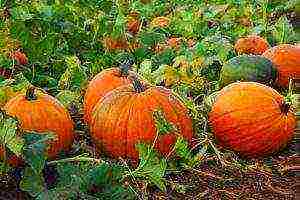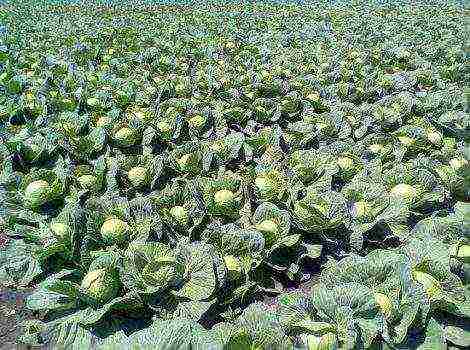Content
- 1 The best yielding varieties with photos and descriptions
- 2 The best varieties of cucumbers, proven varieties: video
- 3 Classification of greenhouse varieties of cucumbers
- 4 The earliest ripening varieties and hybrids of cucumbers
- 5 The most productive varieties of cucumbers
- 6 How to choose cucumber seeds
- 7 How to test germination of cucumber seeds
- 8 Correct feeding of cucumbers for a large harvest
- 9 Methods for growing cucumbers
- 10 Choosing the best varieties of cucumbers
- 11 Video "The best varieties"
- 12 The best varieties for greenhouses
- 13 The best varieties for open ground
- 14 Varieties for shady areas
- 15 Video "Harvest varieties for greenhouses"
- 16 Varietal variety of cucumbers
- 17 The most popular varieties with names
Cucumber is the most grown vegetable in our gardens. From juicy and crunchy cucumbers, there is a huge variety of salads and appetizers, and gherkins are ideal for pickles and pickles. You will get acquainted with the best varieties of cucumbers with photos and descriptions in this article.
The homeland of the cucumber is the rainforests of India. In our climate, it is an annual herbaceous vine. To obtain good harvests, it is necessary to create an atmosphere like at home - moderately high temperature and high humidity.
Lighting, like any liana, must be diffused. It is better to water with water warmed up during the day. Every ten days we feed it with organic or complete mineral fertilizers.
It is not worth delaying the harvest. Regular collection of the grown ovary stimulates its re-formation, i.e. the more often cucumbers are harvested, the more they are tied.
Proper plant formation and good ventilation will reduce the risk of spreading fungal and viral diseases.
Currently, such a number of varieties have been created that it is very difficult not to count and understand them. Let's try to explore
The best yielding varieties with photos and descriptions
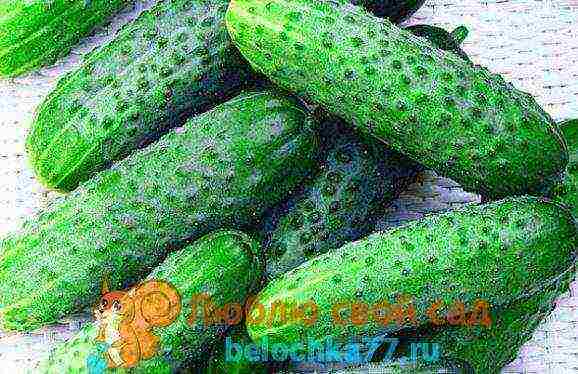
To begin with, all varieties can be divided into those intended for indoor (greenhouse) and open ground (ground).
Ground cucumbers are more resistant to weather conditions, but require insect pollination. Greenhouse plants are more often self-pollinated.
In addition, all varieties are divided according to the purpose of the fruit - suitable only for salads and suitable for canning.
Another division into varieties and hybrids. The varieties are created in the traditional way - by cross-pollination and sometimes by grafting. The fruits grown on such plants are suitable for collecting seeds of the resulting variety. Hybrids, they are designated F1 to distinguish them from varieties, are obtained by more complex pollination, but the fruits grown from these seeds do not contain seeds from which the same plants will grow.
When a gardener sows cucumber seeds into the soil, he knows exactly how he will use the harvested fruits. This determines the selected varieties. If the collected cucumbers are cut into a salad, then the varieties are chosen early-ripening, for salad purposes.
Open field cucumber varieties
For early salads such varieties and hybrids as Stella F1, Graceful, Altayskiy, Kaskad are grown. For conservation, other varieties are planted in open ground.
Early maturity is not necessary for them, much more important in this case is the amicable ripening of fruits, small size and pulp, which retains its density during heat treatment.
The hybrids "Evita", "Matilda", "Naf-phanto", "Regia", "Delikates", "Leandro" have shown themselves well in this quality.
All these varieties are high-yielding, genetically free of bitterness, immunity to most diseases. Here are some more productive hybrids that are recommended for outdoor use:
Bouquet F1
A universal variety in every sense. The state register recommends it open ground and closed. The hybrid begins to set fruits early, and is used both for salads and for preservation.
Plant with unlimited growth, but not very tall, weakly braided. Among the flowers are dominated by women.
Bouquet flowering and fruiting. In each node 2-6 flowers bloom. The ovary is short, elongated, covered with small tubercles. Collect greens when their mass reaches 90-110 g. Delicious. In the open field, 5-7 kg are collected from 1 m2. Weakly susceptible to infectious diseases.
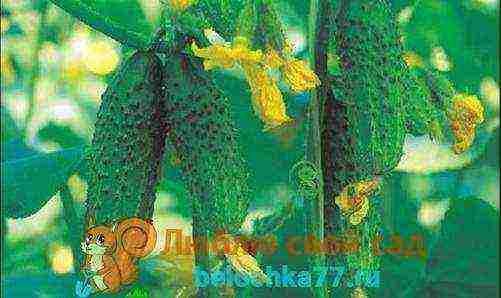 Cucumber variety Bouquet
Cucumber variety Bouquet
Buyan F1
Fruiting from 44 days after germination, self-pollinated variety. For salad purposes, but also suitable for preparation for future use.
The cucumbers are short, regular in shape. Very tasty. The yield can be up to 15 kg per m2. Comprehensively resistant to disease.
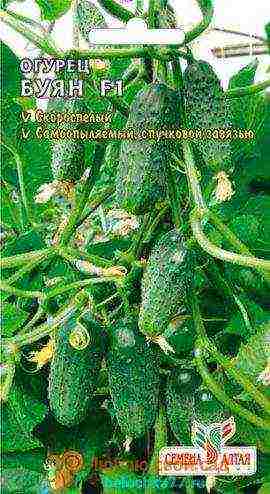 Cucumber variety Buyan
Cucumber variety Buyan
Everyone is the envy of F1
Early ripe, gherkin hybrid. High yields in open field and temporary greenhouses. Comprehensively resistant to diseases and bad weather. A high yield ripens in any conditions and with a lack of light.
Fruiting continues until frost. Each knot forms more than 3 ovaries. Fruits - 9-12cm, covered with white thorns, dense, crispy, with excellent pickling qualities. Immune to a large number of diseases and rot.
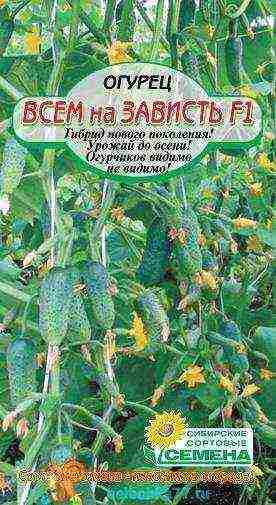 Cucumber variety Everyone envy
Cucumber variety Everyone envy
Herman F1
Rosreestr recommends this hybrid for growing in any conditions - in greenhouses, under temporary shelter, in the open air. Early ripening, multipurpose, good in salads and in preservation.
Cylindrical green, dark green, weakly spotted, ribbed. Medium density pulp.
Genetic lack of bitterness. Cucumbers are harvested at 70-90 g. Productivity up to 9 kg per 1 m2. Delicious both fresh and canned. Immune to diseases typical of pumpkin seeds.
Cucumber variety German
F1 green stream
In 45 days it grows to fruiting. Parthenocarpic hybrid, ties up to 5 greens in one knot. Suitable for protected and open ground. Cylindrical fruits, 11-13 cm long, sweet in taste and very aromatic, they are irreplaceable in fresh salads. When preserved, they retain an appetizing crunch.
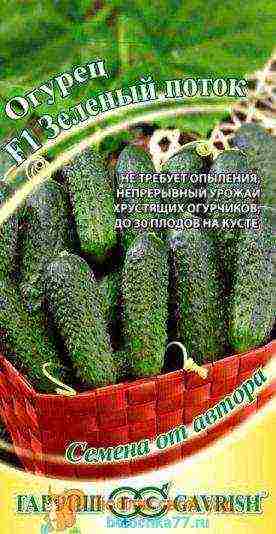 Cucumber variety Green Stream
Cucumber variety Green Stream
Masha F1
A fast-growing, self-pollinated variety. According to Rosreestr, it is recommended for growing indoors and outdoors. Suitable for workpieces for future use.
The ovary is cylindrical with large tubercles, medium density, medium length. Genetically no bitterness. Marketable cucumbers 8.5-9.0 cm. Fresh and processed fruits taste great. 10-11 kg of vegetables are harvested from 1 m2 of greenhouses. Great for growing a house on a windowsill. Disease resistant.
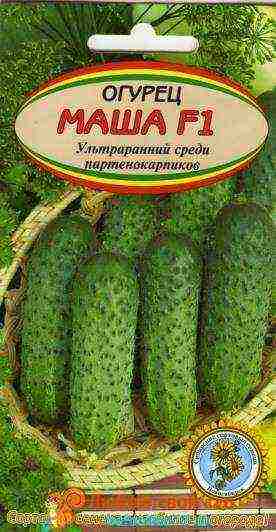 Cucumber variety Masha
Cucumber variety Masha
Beam splendor F1
Fully lives up to its name. Quickly fruiting, self-pollinated, bunchy hybrid with female flowers. Can be grown outdoors, polycarbonate greenhouses.
Bears fruit abundantly in any weather before frost. Good lighting improves yields. Up to 7 ovaries are tied in knots. Cucumbers 8-11 cm, bright green. Ideal for conservation. The variety gives an excellent harvest even in cold summers.
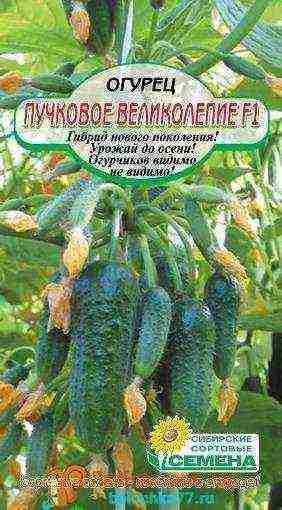 Cucumber variety Bundle splendor
Cucumber variety Bundle splendor
The best varieties of cucumbers for growing in a greenhouse
When choosing seeds for sowing in a greenhouse, take into account: zoning, purpose, ripening time. It is problematic to grow varieties of vegetables pollinated by bees in a greenhouse, it is necessary to carry out artificial pollination.
For cultivation in a greenhouse, seeds of self-pollinated or parthenocarpic varieties are used.It should be remembered here that all these plants are very sensitive to stem formation.
The best varieties for growing in a polycarbonate greenhouse are recognized as "Orpheus", "Gepard", "Cupid", "Glafira", "Blik", "Izumrud", "Mazai", "Romance", but there are others, time-tested and vegetable growers:
Berendey F1
The plant is indeterminate, most of the flowers in the node are female, weakly branched. Fruits well in plastic greenhouses, self-pollinated. Salad fruits ripen in 44 days. Cucumbers are harvested when they reach about 130g in weight, Excellent taste, up to 14 kg are removed from 1 m² of greenhouse.
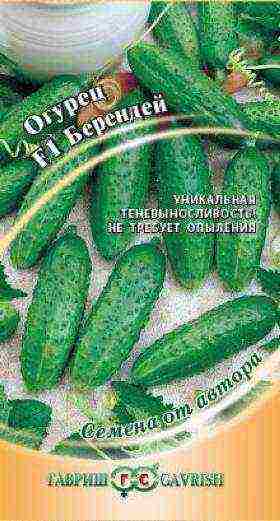 Cucumber variety Berendey
Cucumber variety Berendey
Siberian garland F1
Blooms quickly, does not require pollination, with incredible productivity. Able to bear fruit until frost. Cucumbers 5-8 cm, without voids and bitterness, unrivaled taste when preserved. The stem of the creeper, like a New Year's garland, is decorated with a lot of crunchy, juicy, fragrant, incredibly sweet cucumbers.
Having harvested the Garland once, it is impossible not to plant it again and again.
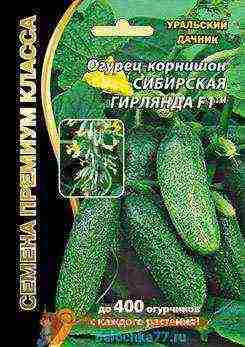 Cucumber variety Siberian garland
Cucumber variety Siberian garland
Emerald City
A variety for film greenhouses, self-pollinated. Can be used fresh, suitable for pickling, good in marinades. Starting from day 40, you can collect short, oval-cylindrical, dense cucumbers, weighing from 100 g.
Fruit that tastes great can be harvested up to 13 kg / m2. On a medium-branched stem, 3 or more female flowers bloom in short internodes. Sufficiently strong immunity to powdery and downy mildew.
 Variety Emerald City
Variety Emerald City
Courage F1
The hybrid was developed for film shelters. Begins to bear fruit at 40-43 days. Self-dusting, for salad and canning purposes. Bouquets of female flowers are located on a vigorous, medium-leafy stem. Zelentsy are harvested when they reach 100-120 g. They are tasty and fresh and canned. Productivity 16-18 kg.
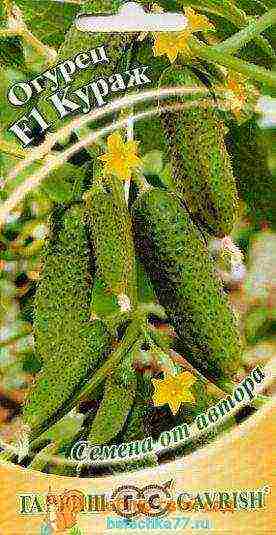 Cucumber variety Courage
Cucumber variety Courage
Little Finger F1
Designed for spring unheated greenhouses. Self-pollinating hybrid, ideal for salads and twists. Fruiting from 46 days from germination. The flowers are predominantly female, 1-2 ovaries grow in each node. Has a firm flesh. Good taste. Productivity 11.3 kg / sq.m. Disease-resistant.
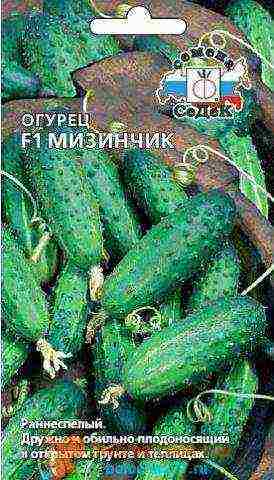 Variety Little finger
Variety Little finger
Goosebump F1
Bred for growing in film shelters. Parthenocarpic, for salads, but also good for preservation. The fruits are ready to be harvested already on the 43-46th day. On a vigorous plant with moderate branching, at least 3 flowers, mostly female, bloom in each node.
The fruits are harvested when their weight reaches 90-100 g. Delicious in any form. The yield reaches 12.0 kg / sq.m. Increased resistance to viral and fungal diseases.
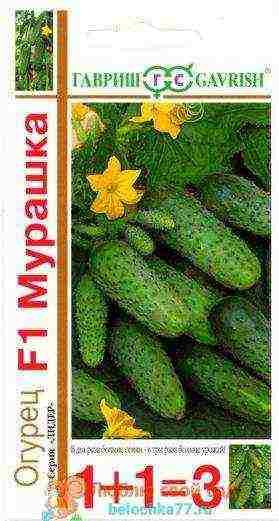 Murashka variety
Murashka variety
Spino F1
The hybrid was created by Syngenta. Super early. It takes only 40 days from germination to harvest. With all this, self-pollinated, resistant to lack of light. Forms many ovaries even with a low trellis.
Bouquet flowering, the predominance of female flowers provide a good yield without failures. Calibrated fruits 12-14 cm, excellent taste, not bitter. Used fresh and processed. They are well stored, tolerate long-term transportation. Do not get sick.
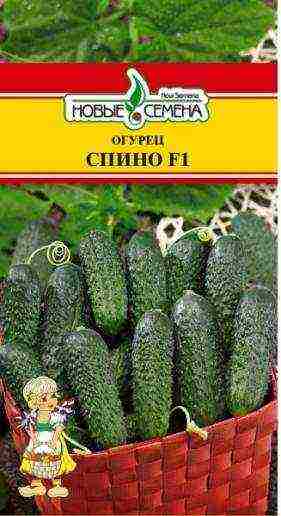 Cucumber variety Spino
Cucumber variety Spino
IMPORTANT! To understand which yielding varieties of cucumbers to choose, you need to take into account the region where this variety will be grown. All the characteristics of the variety indicated on the package are manifested only if this variety or hybrid is zoned for a given locality.
A selection of the best varieties of cucumbers.
- The best varieties for the Moscow region. April F1, Business F1, Gaze F1, Aquarius, Cruise F1, Shrub, Libella F1, Phoenix 640, Electron
- The best varieties for pickling... Nezhinsky; Muromsky; Era; Nosovsky; Nezhinka; Stage; Zozulya F1; Salting F1; Semcross; Barrel pickling F1; Pickling F1; F1's Mama's Favorite; Lilliput F1;
- The best varieties of cucumbers for the Urals and Siberia. "Cupid", "Arina", "Moscow Nights", "Voyage", "Altai", "Far East 27", "Miranda".
- Chinese cucumber varieties: “Chinese Miracle”, “White Delicacy”, “Chinese Snakes” “Emerald Stream”, “Chinese Heat Resistant”, “Alligator”, Chinese Disease Resistant, Chinese White, Chinese Farm F1, Chinese Long-fruited.
These are just a few varieties of cucumbers with photos and descriptions of a huge amount of cucumber splendor. It is necessary to write a continuation of this topic, because so many wonderful varieties were left without attention.
The best varieties of cucumbers, proven varieties: video
Best regards, Sophia Guseva.
There is nothing tastier than vegetables grown in the garden. Especially if it's cucumbers. Many gardeners grow these vegetables in their gardens. Therefore, breeders periodically create new varieties that compare favorably with the previous ones. This article will tell you what types of cucumbers experts recommend to grow on their land and in what situations. We will tell you about the best and most delicious varieties of cucumbers in our article.
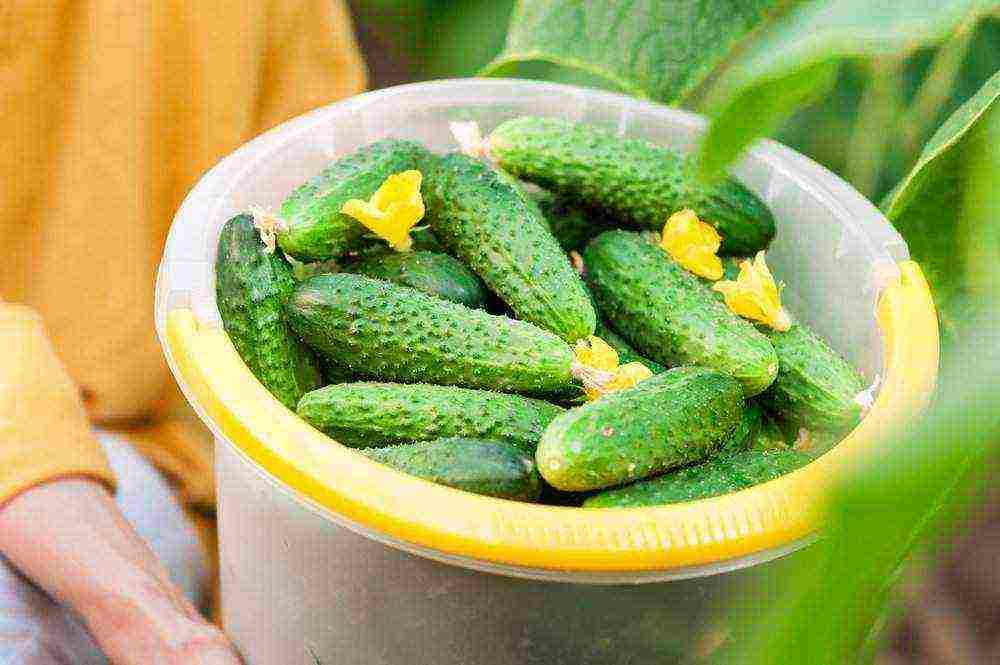
Classification of greenhouse varieties of cucumbers
Just like other greenhouse crops, cucumbers have their own ripening and harvesting classification. All varieties are classified into three main groups:
- winter and spring;
- spring and summer;
- summer and autumn.
Fresh articles about garden and vegetable garden
In turn, each of the groups is divided into subgroups according to the time of fruit ripening:
- early;
- medium;
- late.
But that's not all. According to the method of pollination, varieties are classified as self-pollinating and pollinated by insects. The first species has another name - parthenocarpic.
Some greenhouse owners, growing cucumbers for sale, try to keep up with the high yield, without paying special attention to another classification - the purpose of the vegetable. This is extremely wrong, since depending on why a person buys cucumbers, demand depends on them.
Cucumbers are classified by purpose:
- for conservation:
- universal;
- for salads.
Considering each species, we must conclude that cucumbers for conservation are distinguished by a thin skin and the presence of a sweet aftertaste. In turn, salad cucumbers have a thick top shell, which is unacceptable for pickling.
The earliest ripening varieties and hybrids of cucumbers
Many winter varieties of cucumbers have a long ripening period (up to 70 days), which will not satisfy the requirements of many gardeners who want to get everything at once. It is known that in winter the price of vegetables is much higher and the profitability of vegetable growing increases significantly. The earlier you harvest the crop, the more expensive it can be sold a few months before the start of the season. If you are looking for early ripening cucumbers for greenhouses, the varieties listed below will be the best option.
- Cybria cucumber. The group of the earliest, technical ripeness occurs in 45 days, due to which it is the number 1 choice for many summer residents who grow vegetables in greenhouses. The generative power of the bush is very high, it forms a large number of fruits (up to 25 pieces), weighing 90-100 grams. In addition to being ultra-early, it has a high yield. This hybrid brings up to 12 kg per square meter - an excellent result for domestic breeding. Resistance to anthracose, fusarium is high, it is maximally adapted for growing in closed ground. Taste is excellent, has a characteristic crunch when biting, the flesh is sweet, very dense.
- Merenga cucumber. An ultra-early ripening hybrid that tolerates low temperatures well (seeds germinate at +10 degrees) and after 50 days the technical ripeness comes. The average weight of one fruit is about 150 grams, quite large. Some specimens grow up to 300 grams or more, but this is rare, since with proper care and timely harvesting, all the thugs have a presentation. Resistance to rot is high, but often various kinds of fungi form on the leaves, in that leaf there is also brown spot.It is recommended to treat with copper-containing preparations when growing crops in greenhouses. The bushes are tall, strongly braided, it is recommended to grow them on a trellis, so that the bushes are organized into the correct shape as best as possible.
- Cucumber Cupid. An ultra-early ripening hybrid with a maturing period of only 42 days. The first greens are tied 35 days after germination, it is this feature that attracts many summer residents and farmers who want to grow vegetables in a greenhouse and rely on an early harvest to get more profit. The average weight of one fruit is 80 grams, up to 35 pieces are formed on one bush, and an average of 12-14 kilograms can be harvested from one square meter. As for the resistance to diseases, it is high, primarily to anthracosis and verticillary wilt.

The most productive varieties of cucumbers
High-yielding cucumbers include the following types:
- Tumi. Harvest up to 12 kg. At the same time, cucumbers reach a size of up to 10 cm, and also have a thin skin. An additional advantage of Tumi is resistance to temperature extremes, as well as various diseases. Moreover, the plants do not need constant watering.
- Courage. Up to 25 kg of the crop can be harvested from one plant. Therefore, Courage is very popular today.
- Cupid 1. This hybrid is characterized not only by excellent yield at the same time with extremely early fruiting. Cupid 1 allows you to collect up to 30 kg from a bush. And if you wish, you can achieve an output of up to 50 kg.
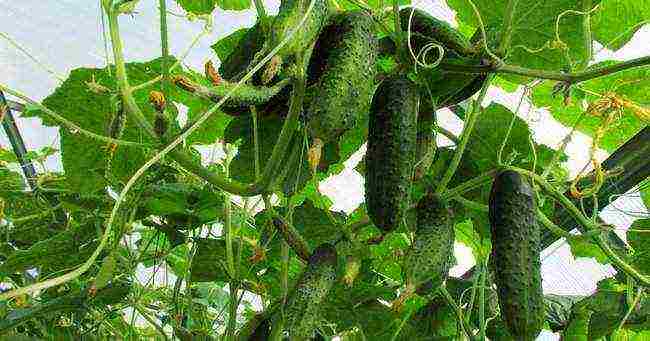
How to choose cucumber seeds
Decide which seed you want to deal with - varietal or hybrid. Recall that varietal cucumbers are the result of crossing plants of the same species, hybrid ones (marked with "F1" symbols) - different ones. At the same time, varietal species will require more effort from you to get a good harvest, but they can then be a source of seeds for the next season. Hybrids are more productive, easier to care for and more resistant to diseases, but their seeds will not give such results next year, therefore, they are not recommended as seed. The next point to determine is how you are going to grow cucumbers. If you plan to get a good harvest in a greenhouse, choose parthenocarpic cucumber varieties.
If you grow plants in a greenhouse or tunnel shelters, greenhouses, be sure to purchase seeds of parthenocarpic cucumbers, since they do not require insect pollination, the ovaries appear on female flowers. Zelentsy may not have seeds, since the pollination process does not occur. The package should be marked: "For indoor cucumbers."
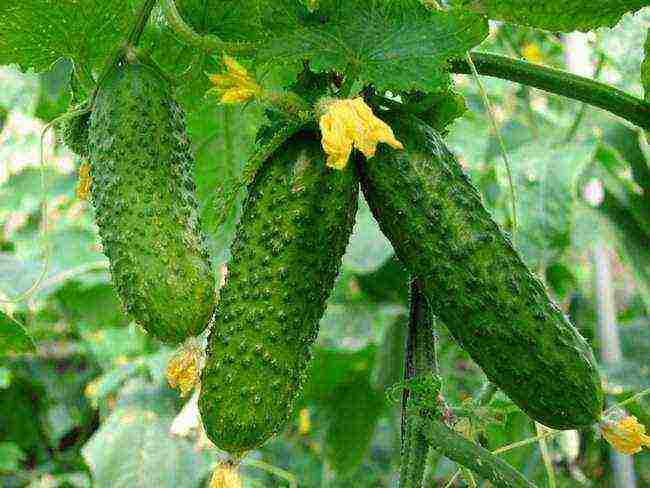
Fresh articles about garden and vegetable garden
How to test germination of cucumber seeds
Place the seeds in hot (50-60 ° C) water for 3 hours (no more). Remove and dry until flowable. And we proceed to germination. Take 2 pieces of natural fabric (cotton or linen) and moisten them. Place the seeds on one piece of cloth and cover with the other. Leave in this state for three days at a temperature of at least 15-20 ° C, the fabric should always be damp (it is best to spray from a spray bottle). After 3-4 days, count how many seeds hatch.
Correct feeding of cucumbers for a large harvest
Top dressing of cucumbers begins from the moment two full-fledged leaves appear at the seedling stage and can continue until autumn, depending on the quality of the soil. This procedure is necessary in order for: cucumbers to grow faster and begin to bear fruit earlier; the number of fruits increased; the fruiting period was extended; the palatability of the fruits improved.
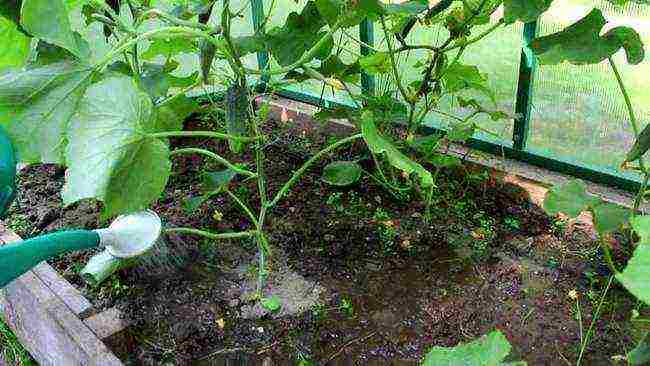
In addition, fertilizers allow plants to strengthen their immunity and protect them from diseases, and for cucumbers, as for whimsical plants, this is extremely important. Standard feeding takes place in two stages: at the seedling stage, and then every two weeks after planting in the ground.
Three common types of fertilizing are considered safe and economical: The container for preparing the fertilizer is filled with cow dung by a third and two-thirds filled with water, leaving about a week and a half for fermentation. The finished fertilizer is diluted with two parts of water before use. The second method is identical to the first, but in this case, instead of manure, chicken manure is used, and the finished fertilizer is diluted with water in a ratio of 1 to 3. For ten liters, 10 grams of ammonium nitrate, superphosphate and potassium salt are added. This amount is enough to process one square meter of soil (about 4-5 plants).
Methods for growing cucumbers
You can plant a crop using several methods, all of them are characterized by their own nuances: laying seeds; transplanting. The first of the options is implemented in acceptable conditions: the prepared seed is laid in the summer (early June), when the cold has completely receded and the temperature regime does not go below +15 degrees. The technology of planting seedlings of cucumbers is implemented in two stages: planting seeds in the spring in a pot (early-mid May); after a month, young plants are transferred to a predetermined place.
Cultivation of cucumbers in the open field is carried out by other methods of planting planting material: installation of trellises; got in the way. A feature of the first option is the need to prepare a supporting structure (trellis). The minimum area is used, because only two rows of plants are enough, and the distance between them is 1-2 m.When the problem is solved, how to grow cucumbers in open ground using the spreading method, you need to allocate a significant area for this purpose. It is impossible to shift and move the stems, because this violates the orientation of the leaf plates, and the harvest will be later.
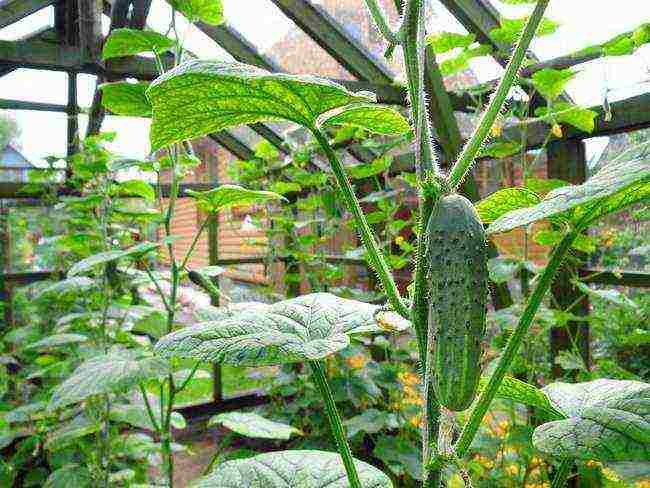
Of course, in addition to the ones described above, there are many good and reliable varieties of cucumbers. When choosing a suitable option for yourself, take into account the climatic conditions of your region, the features of the site, as well as the taste preferences of your family.
There is nothing tastier than vegetables grown in the garden. Especially if it's cucumbers. Many gardeners grow these vegetables in their gardens. Therefore, breeders periodically create new varieties that compare favorably with the previous ones. This article will tell you what types of cucumbers experts recommend to grow on their land and in what situations.
Choosing the best varieties of cucumbers
To obtain a high-quality and tasty harvest of cucumbers, it is important not only to comply with all the necessary agrotechnical measures, but also to choose the right planting material. You need to understand what qualities you need: quick ripening, taste, winter hardiness, etc.
Many experts recommend choosing high-yielding cucumber varieties. Abundant fertility allows harvesting up to 30 kg from 1 m2. However, such a yield can only be achieved with proper care. It is these varieties that are often called the best.
High-yielding cucumbers include the following types:
- Tumi. Harvest up to 12 kg. At the same time, cucumbers reach a size of up to 10 cm, and also have a thin skin. An additional advantage of Tumi is resistance to temperature extremes, as well as various diseases. Moreover, the plants do not need constant watering;
- Courage. Up to 25 kg of the crop can be harvested from one plant. Therefore, Courage is very popular today;
- Cupid 1. This hybrid is characterized not only by excellent yield at the same time with extremely early fruiting. Cupid 1 allows you to collect up to 30 kg from a bush. And if you wish, you can achieve an output of up to 50 kg.
In addition to high yields, those varieties that ripen early are also appreciated. Such forms of cucumbers include the following varieties:
- Zozulya. The ripening period is extremely short - 48 days. If everything is done correctly, then the Zozuli fruits will turn out to be rather big - up to 23 cm in length;
- Masha F1. This is a novelty that has already shown itself quite well.Masha F1 produces medium-sized fruits. Good for pickling;
- April F1. Early ripening variety with cucumbers up to 300 g. The hybrid has excellent immunity. The hybrid yields a harvest within 1.5 months after planting. It is considered a versatile variety. Can be grown both open and closed. All this is possible due to the compact size of the bushes. Cucumbers themselves can reach 23 cm in length and at the same time weigh about 200 g. The universal one gives a good harvest, without bitterness, even under conditions of violation of the water regime. April F1 is unpretentious in maintenance and is considered a cold-resistant crop.
Speaking about the best varieties of cucumbers, one cannot ignore those varieties that stand out for their excellent taste. This characteristic is often attributed to hybrid forms. And in this regard, the choice most often falls on Herman F1. His cucumbers are delicious in any form. What is especially good, it is self-pollinated and can give a bountiful harvest of up to 25 kg per m2.
Another tasty hybrid is the Prestige F1. Besides good taste, Prestige F1 gives 25 kg per m2. Its fruits have a slightly sweet taste. Ideal for various types of preservation.
It should be noted that the best varieties of cucumbers for 2017 should be chosen not only for taste and fruiting. To achieve an excellent result, when choosing, you should rely on the place of growth. According to this criterion, cucumber varieties are divided into three categories:
- for indoor cultivation (in a greenhouse);
- for open cultivation;
- for shady areas.
In each place of growth, certain varieties should be planted that are optimal for specific conditions. Let's consider each option in more detail.
Video "The best varieties"
From the video you will learn about the best varieties of cucumbers.
The best varieties for greenhouses
In greenhouse conditions, gardeners most often plant early-maturing varieties. In this case, it is worth giving preference to those species that are capable of self-pollination. Indeed, in a greenhouse with insects, especially in mid-spring, it will be very tight and you risk being left without a crop. In addition, hybrid forms of plants are characterized by good resistance to pathogenic microflora, which greatly simplifies planting care and guarantees a better harvest.
In a greenhouse, the following varieties are most often planted:
- Hermann. Is the best representative of Dutch hybrids. Today it is quite popular. It is an early maturing variety that is well suited for indoor cultivation, and can also be grown in some regions and outdoors. The crop can be harvested after 40-45 days. Herman is very hardy and able to feel great even at +9 C0. Such a temperature can only slightly slow down the development of zelents, which is not critical for fruiting in general;
- Dynamite F1. It is considered a parnokopichesky salad variety. Cucumbers can be harvested after 40 days. The fruits are cylindrical in shape. Their average weight is 100-120 g;
- Son-in-law F1. Hybrid parthenocarpic type of early maturation. A product of domestic breeders. Despite the fact that it is intended for closed cultivation, Zyatek F1 is also suitable for open cultivation. Fruits weigh about 90-100 g on average. Long-term fruiting is characteristic. From 1m2, you can get up to 13 kg of harvest.
In addition, the previously described variety of Zozul can also be grown in closed conditions. In addition to all of them, the following varieties are also suitable for indoor cultivation:
- Elegant. Suitable for film structures. The vegetables have an elliptical shape and weigh about 150 g. The flesh is sweetish (without bitterness), crispy and juicy. Productivity is modest - about 5-7 kg per 1m2;
- Muromsky 36. This is a bee-pollinated old early ripening variety that can be safely cultivated in temporary film shelters. It has a short ripening period of 32-42 days. Cucumbers are ovoid or oblong-oval in shape.Their weight is about 50-70 g. The yield is small - only 2-3 kg per 1 m2. It is popular for the fact that the more you pluck the fruits, the more they become. Its peculiarity is that the fruits very quickly acquire a yellow color. Therefore, Muromsky 36 should be collected more often;
- Competitor. This is a mid-early look. On a cucumber bush, cylindrical-oval greens are formed. The yield is average. From 1 m2 you can get up to 3-5 kg. The fruits have a dense, aromatic, crunchy pulp. Good for pickling, but just as good when fresh. The competitor is not afraid of powdery mildew. Most often cultivated in the Moscow region.
Greenhouses and balconies can be planted with different varieties of cucumbers. Among them, the most popular will be the F1 Machaon. It is a parthenocarpic early maturing gherkin hybrid. Swallowtail F1 is characterized by a female version of flowering. Zelentsy spindle-shaped. At the same time, their length does not exceed 11 cm. Fruits with a mass of about 60-110 g are formed on cucumber bushes. Due to the characteristic taste, the greens are well suited for salting. This cucumber hybrid is resistant to olive spot, cucumber mosaic and powdery mildew.
Hummingbirds F1, Balkonny F1, Moscow hothouse, Nezhinsky local and Biryusa are also excellent for growing in closed conditions.
Each type described above has its own advantages and disadvantages, as well as a corresponding list of agrotechnical measures. Adherence to agricultural practices is the key to getting a good quality and quantity harvest.
The best varieties for open ground
It is the open growing method that is considered the most popular, since it does not require the construction of any structures, as well as external material costs.
All cucumbers that are planned to be grown openly must have good tolerance to the natural and climatic conditions that exist in a particular growing region. If you neglect this, the harvest will definitely not please. In addition, plants must resist well to most types of diseases. It is climatic factors and pathogenic microflora with insect pests that have the greatest impact on the yield of plantings.
According to experts, the best candidates for open cultivation would be:
- The son of the regiment. It is a parthenocarpic and mid-season variety. The first cucumbers can be obtained within 40-45 days after planting. Gherkins are formed on the bushes. The plant is immune to various types of pathogenic pathogens. The fruits are multifunctional and do not outgrow in the process of their development.
- Universal. Excellent fertility is characteristic. With the proper approach, up to 50 kg can be removed per season. It is considered one of the best conservation varieties, since the Universal is small in size, which makes it perfectly fit in jars. Has a delicate, "velvety" taste, which allows them to be perfectly used fresh.
- Altaic. An early maturing plant that forms fruits 36-40 days after planting. Altai is small in size and is almost completely covered with small pimples. The taste is delicate, delicate. Therefore, cucumbers are often used for making salads. It tolerates frost well and has resistance to fungal pathogens.
The above hybrids and common forms are best for open cultivation. Some of them are so easy to care for and are unpretentious plants that even a novice amateur gardener can cope with growing.
Varieties for shady areas
Many gardeners are faced with a situation where there are darkened places on their site. Crops grow poorly in them, which affects their productivity. In such a situation, cucumbers can be grown in problem areas, which are not afraid of the shade and do not need constant lighting.There is a whole group of such varieties that allow not only to effectively use a shaded place, but also to get a decent harvest from it in terms of quantitative and qualitative characteristics. These varieties include:
- The secret of the F1 company. This is an early maturing parthenocarpic variety. On the bushes, greens ripen in 38-42 days. The fruits are cylindrical. Usually their weight is equal to 115 g. The secret is resistant to cladosporium and powdery mildew;
- Moscow evenings F1. It is also an early maturing parthenocarpic hybrid. Due to its structure and dimensions (length - up to 14 cm, weight - no more than 110 g), Moscow Nights F1 is an excellent conservation species. At the same time, they can be used fresh. Zelentsy are distinguished by their tuberosity and cylindrical shape. They often have white pubescence. Sufficient resistance to cladosporium disease, cucumber mosaic and powdery mildew is described.
It should be noted that the previously described variety Muromsky 36 grows well in shady areas.
As you can see, even for shady areas, you can pick up ideal plants that will not only develop well in such conditions, but also give an excellent harvest. Moreover, they will bear fruit well, even if the summer was not sunny.
Cucumbers are one of the most popular crops, which gardeners grow more often than others on their land plots. Among them there are varieties that are excellent for growing in open and closed ground, as well as in poorly lit areas. Its yield depends on how correctly the type of plant was selected, as well as your physical and financial costs for obtaining tasty and high-quality fruits.
Video "Harvest varieties for greenhouses"
From the video you will find out which cucumbers are suitable for greenhouses.
The success of the cucumber crop depends in particular on the choice of seed. The wide assortment on the shelves confuses thoughts rather than allows you to make the right decision. Novice gardeners are advised to first familiarize themselves with the varieties, their names, the characteristics of cultivation and care.
Depending on climatic conditions, different varieties can be planted in Ukraine, Belarus, Chernozem, Bashkiria and the middle lane - these can be parthenocarpic, early ripening, with a long ripening period, or delicious cucumbers for growing in a greenhouse. More information is structured in the article in the form of a kind of list-rating.
Varietal variety of cucumbers
A large number of varieties allows you to choose the best options that have disease and weather resistance the region where the green plant is planned to be grown.
A common mistake is the use of certain 2-3 varieties, the cultivation of which has been practiced for several decades.
Domestic and foreign breeders have developed many hybrids that have no less affordable agricultural technology and excellent taste than the once loved cucumbers.
Among the top tips for growing vegetables, experts point to the need to plant several varieties at once... This makes it possible to evaluate the yield of different species under the same ripening conditions, to get at least some yield during drought or prolonged rains.
Collect the necessary and useful information about the varietal variety, the characteristics of the characteristics of zelents can be found below.
The most popular varieties with names
For the convenience of perception and application of the text in practice, plants are divided into separate groups, united by a common feature.
The best self-pollinating for outdoor use
Self-pollinating cucumbers have a number of advantages, among which excellent immunity and resistance to an abundance of moisture are noted.
- Booth - ripening period is only 40 days. The length of the green plant reaches 9 cm. One bush yields up to 3.5 kg. The strong immunity of the plant resists various diseases (olive spot, mosaic, powdery mildew).
- Courage - harvesting of the Kurazh variety begins 40-47 days after the sprouts break through from the soil. The weight of one cucumber reaches 170-180 gr., Up to 10 zelents are formed on one shoot. The plant practically does not suffer from rot, powdery mildew.
- Connie - harvesting of fruits begins on the 50th day after sowing. The culture is universal both in the way of cultivation and in the use of cucumbers. The length of the greenery is 10 cm, the yield from 1 m2 is about 9 kg.
- Berendey - fruits (12-15 cm) ripen 42 days after the sprouts appear. One bush can be harvested up to 3.5 kg. Zelentsy have excellent characteristics and have a long shelf life.
- Gerda - fruits 10 cm long appear 1.5 months after sowing. 2.8-3 kg are removed from the bush. The plant is rarely affected by diseases; it is especially resistant to fungal infections.
The best early ripe cucumbers
Early ripening varieties have a feature that every gardener should be familiar with.
The ovaries of male flowers are the first to form, they must be removed, since they interfere with the development of the plant.
- April - from the moment of planting, the fruits of April ripen on the 50th day, reaching a length of 20-22 cm. The plant itself regulates the growth of shoots, so the need for cutting falls off. Productivity from 1 m2 on average 22 kg. Cucumbers do not overripe if they miss the assembly deadline. The culture is resistant to almost all diseases, with the exception of root rot.
- Hermann - sprouts at 39-41 days after sprouting. The length of Herman's greens reaches 10 cm, 23-26 kg are harvested from 1 m2. The hybrid is characterized by a long fruiting period, self-pollination and immunity to fungi.
- Orlik - begins to bear fruit on the 47-50th day after sowing. The length of the greenery reaches 14-16 cm, with a diameter of 3.5-4 cm. 6-8 kg are removed from the bush. The culture has a strong immunity, resists powdery mildew, root rot, olive spot and TMV.
- Valdai - the bush begins to bear fruit on the 45th day after the emergence of sprouts. Flowers are formed predominantly by women, therefore pollination by bees is required. The length of the greenery is about 10-11 cm, up to 4.5 kg of the crop is removed from the bush. The hybrid was developed for preservation, but due to its delicate taste it is also used for salad.
Mid-season
Medium ripening varieties begin to bear fruit on the 45-55 day after sowing the seeds into the soil. All plants of this group differ in the method of cultivation (greenhouse, soil), purpose (fresh or for salting) and the type of pollination.
- Competitor - characterized as a plant that loves life and is resistant to diseases. The length of the greenery reaches 9-12 cm with an average weight of 100 grams. Up to 3.8 kg of the crop is harvested from each m2. The variety has good immunity and is resistant to powdery mildew.
- Nezhinsky - a variety pollinated by bees, characterized by a powerful stem, medium-sized fruits (length 10-12 cm, weight 90 g) and high yield (8 kg per 1 m2). Nezhinsky tolerates low temperatures and is resistant to many diseases. Cucumbers have a high taste.
- Libella - a versatile hybrid with a long fruiting period. With proper care, you can harvest until the coldest days. The length of the Libelle greenery reaches 14 cm, weight - 140 grams. Up to 10-12 kg are removed from a square meter. When salted, the flesh remains crispy and firm. In agricultural technology, there are rarely cases of damage to crops by common diseases.
- Table - has an excellent taste without bitterness, ideal for salting. The bush is formed long with a strong lash, the length of the fruit reaches 12 cm with a weight of 80-90 grams. Productivity from 1 m2 about 8 kg.
Late ripening
A feature of late-ripening cucumbers is that the seeds germinate well only in the 3rd year.
Therefore, the purchased material before planting is worth check for germination... Also, when choosing varieties of this group, you need to take into account the climate of the region and the ripening period of zelents in order to have time to collect most of the harvest before the onset of cold weather.
- Phoenix - the harvest period begins 64 days after seed germination. Cucumbers reach a length of 16 cm, with an average weight of 230 g. Phoenix bushes form a branched whip that resists the vagaries of the weather well.
- Winner - differs in long spreading lashes that easily tolerate drought, coolness. The plant is resistant to various types of fungi. Fruit length reaches 14 cm with an average weight of 110 grams. The yield from 1 m2 is 7-8 kg.
- Solar - the variety is mid-season, but most gardeners plant it as late. The bush releases many twigs, forming a massive whip, which implies planting in a large area. The peel of the greenery is covered with a few tubercles and greenish stripes. The length of a cucumber reaches 12 cm with an average weight of 140 grams.
- Brownie - the harvest period starts 65 days after germination. The length of the cucumbers is small (9 cm), but the taste is high. The culture has good immunity, showing resistance to almost all common diseases. Productivity - 6-8 kg per 1 m2.
- Chinese - a disease-resistant variety with a mild taste and lack of bitterness. A feature of the fruit of the Chinese cucumber is considered to be a short shelf life after harvest. Original elongated cucumbers (30-35 cm) look like snakes. The plant tolerates low temperatures and poor lighting well.
Which are the highest yielding for greenhouses
All gardeners, without exception, are attracted by high-yielding varieties. In your greenhouse, you can try to grow the most popular of them.
- Parisian gherkin - fruits ripen in 50-60 days after sowing. The length of the Parisian gherkin variety reaches 12 cm with an average weight of 85 grams. A large number of ovaries are formed on the lash, which guarantees a high yield - over 30 kg per 1 m2. Low germination of seeds provides for planting beds through seedlings.
- Fontanelle - a popular cucumber among gardeners in our country. It is grown in almost every area. The dimensions of the Spring greens reach 22-24 cm with an average weight of 150 grams. More than 10 kg are removed from the bush. In terms of taste and rules of agricultural technology, the variety remains competitive in front of the best European developments of breeders.
- Zozulya - the harvesting period begins on the 45th day after sprouting. The formation of the lash is carried out in such a way that the bush does not need pruning. Zelentsy reaches 24 cm in length with an average weight of 280-300 grams. From a square meter, you can collect up to 30 kg of Zozulya cucumber. The plant is practically not sick with olive spot and cucumber mosaic.
For planting outdoors
- Suzanne - a versatile crop that can be grown not only in the open field, but in a greenhouse and even on a balcony. The length of the lash reaches 3-4 m, forming a large number of ovaries. Plucking fruits 3-4 centimeters long or wait until they become larger, this does not affect the taste. Suzanne has good disease and pest resistance.
- Sparta - the hybrid is bee-pollinated with stable fruiting. The length of the greenery is 6-12 cm, the taste is pleasant without bitterness. The culture has a strong immunity, especially against powdery mildew and fungi. The yield per bush is 2.8-3.1 kg.
- Pickle - the fruiting period begins 55 days after the emergence of sprouts. The length of the greens is 9-11 cm with an average weight of 100-110 grams. More than 4 kg are removed from one bush. The pickle has a delicate taste with a sweetish note, without bitterness.
- Pinocchio Is a self-pollinated hybrid that begins to ripen 48 days after germination. The length of the greenery is about 8-9 cm with a weight of 85 grams. The yield per bush is 3.4 kg.
- Sturdy - by the rate of ripening, the cucumber is considered a sprinter, just 38 days after the emergence of sprouts. The length of the greenery is about 9 cm with a weight of 80 g. The fruiting period is fleeting, all ovaries form and ripen together.Unfavorable weather does not have a negative effect on the growing season.
For growing in Siberia
Growing cucumbers in a harsh climate has its own characteristics. It is better to plant cucumbers in Siberia in polycarbonate greenhouses or choose fruitful early maturing varieties.
When choosing seeds, preference should be given to varieties with stress resistance.
- Altaic - it has a short ripening period, the harvest begins 36-40 days after germination. The length of the greenery is 9-12 cm with a weight of 100 g. The plant is cold-resistant, easily tolerates the vagaries of the weather. After harvesting, the fruits retain their presentation and taste for a long time.
- Serpentine - gherkin type cucumber, ripens 39-42 days after germination. The fruiting period is intense, already in the first 10 days most of the harvest is harvested - over 1.7 kg per 1 m2. Serpentine is known for its taste, which lacks bitterness.
- Bush - a compact plant that needs pollination. The length of the greenery reaches 8 cm with a weight of 90 grams. Productivity is stable with proper care (3 kg per bush). The peculiarity of the variety is its endurance and strong immunity. Cucumbers are versatile.
Each variety of cucumbers has an impressive set of benefits. The main thing when choosing is to take into account the climatic features of the region and the correspondence to them of the characteristics of the varieties you like. Then the main stage of laying the future harvest will be performed correctly.

